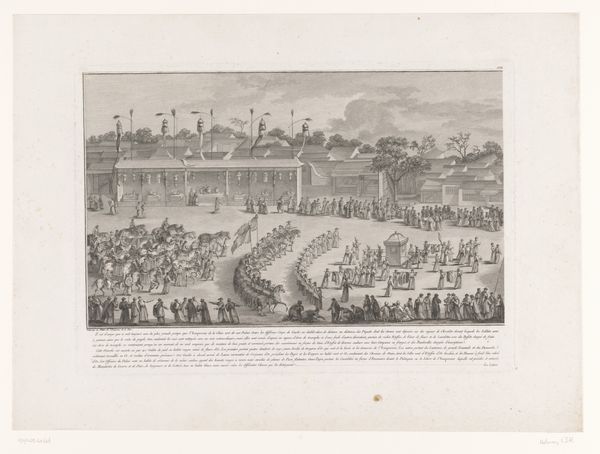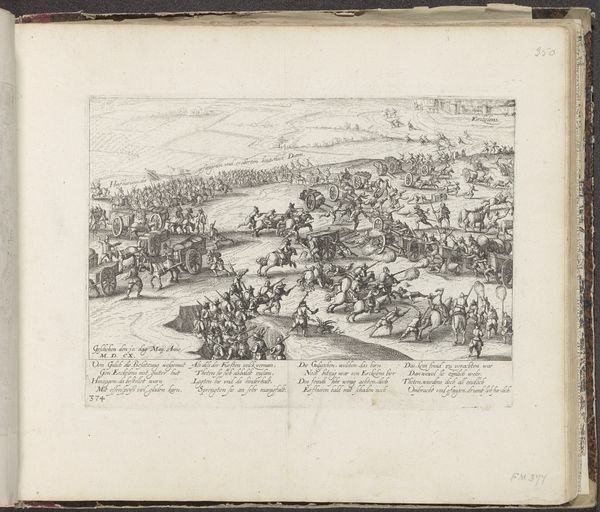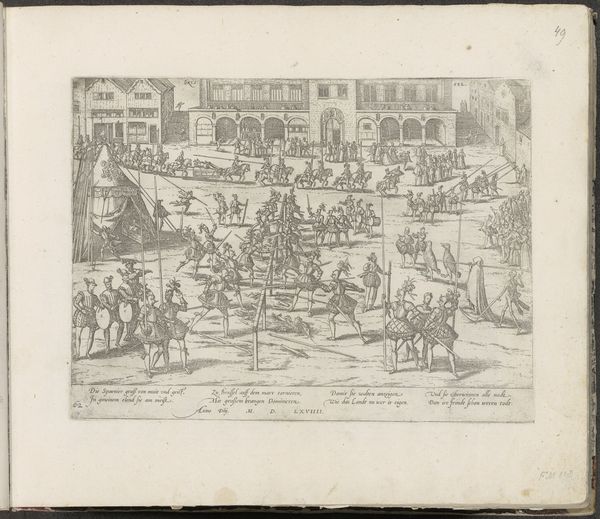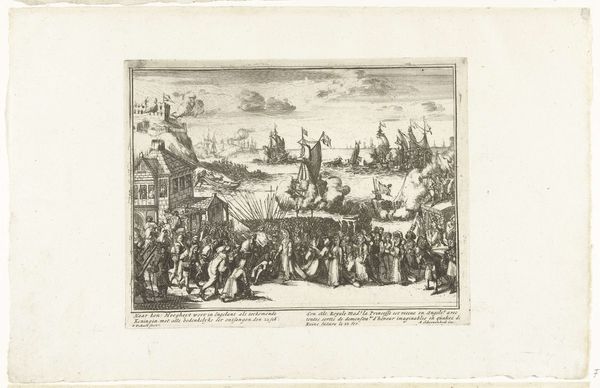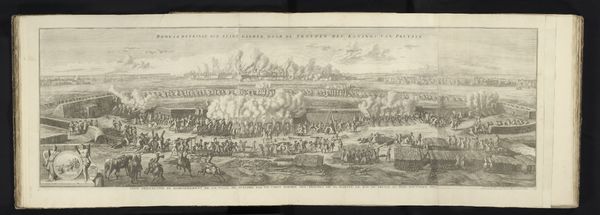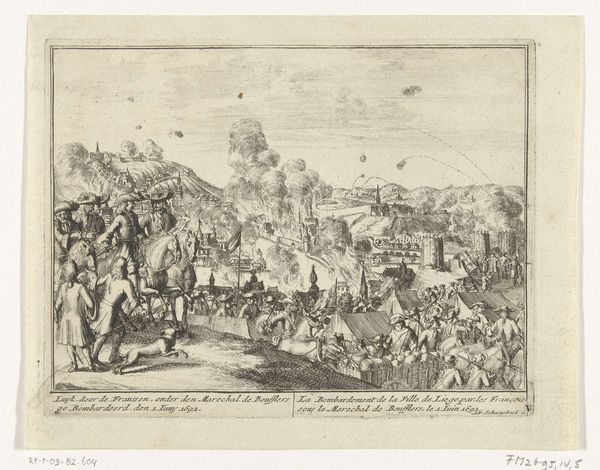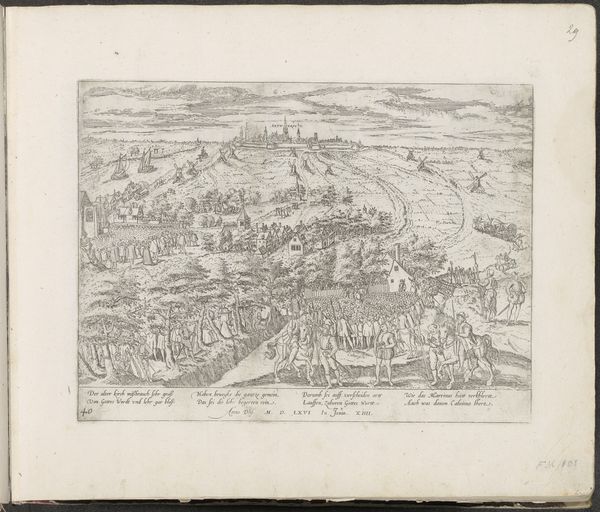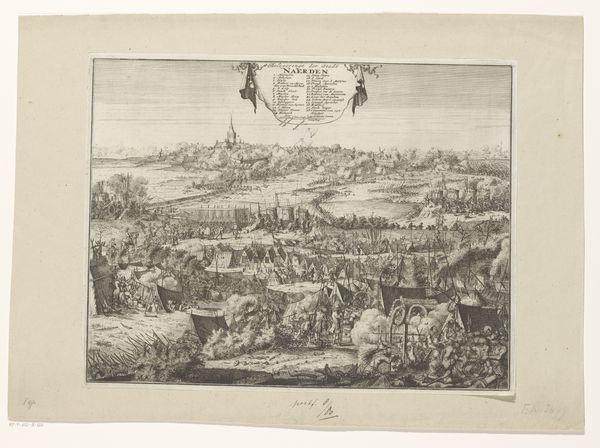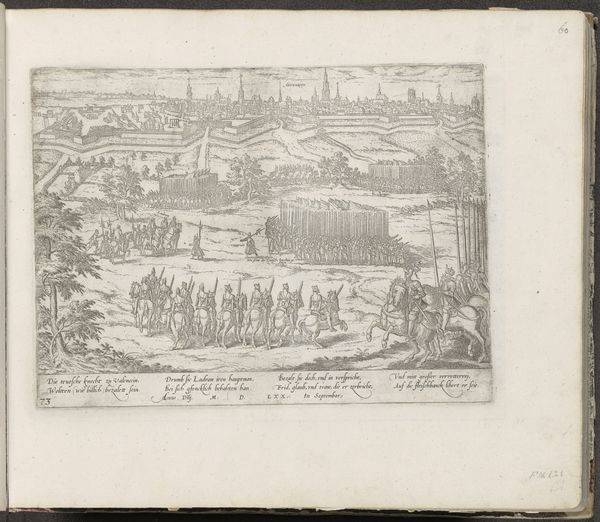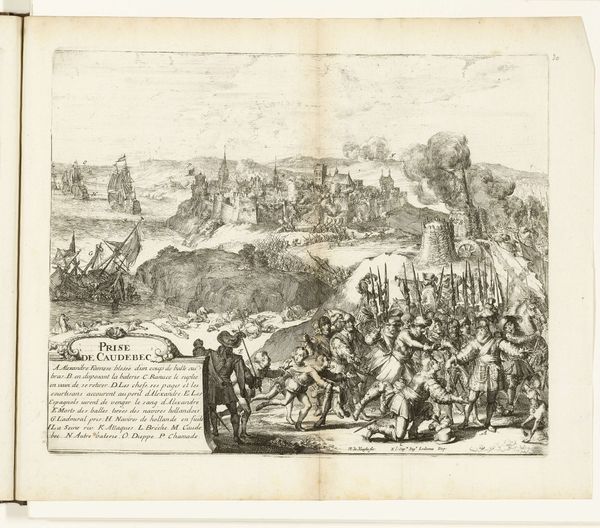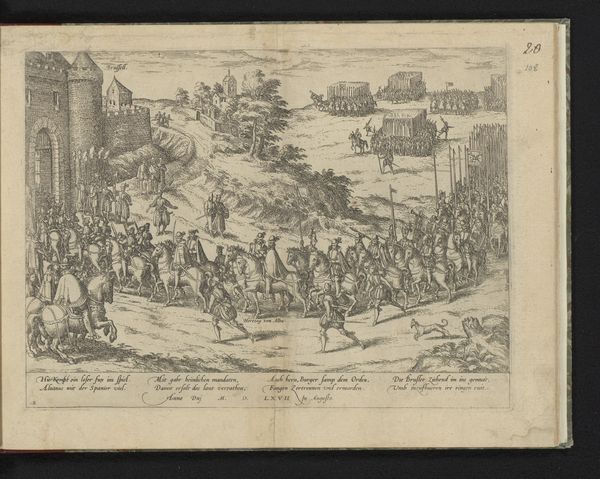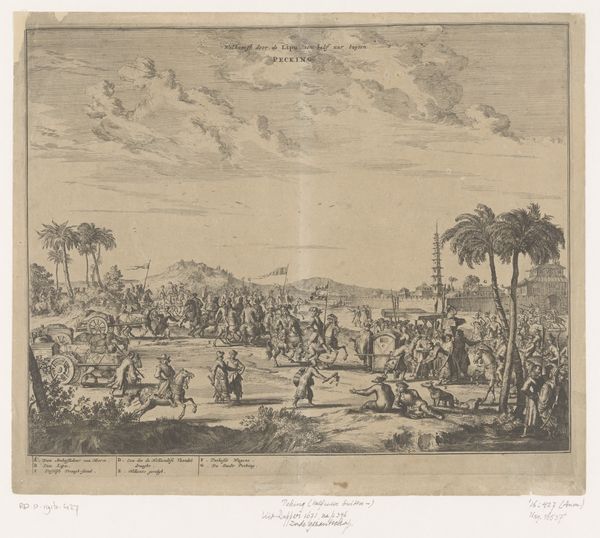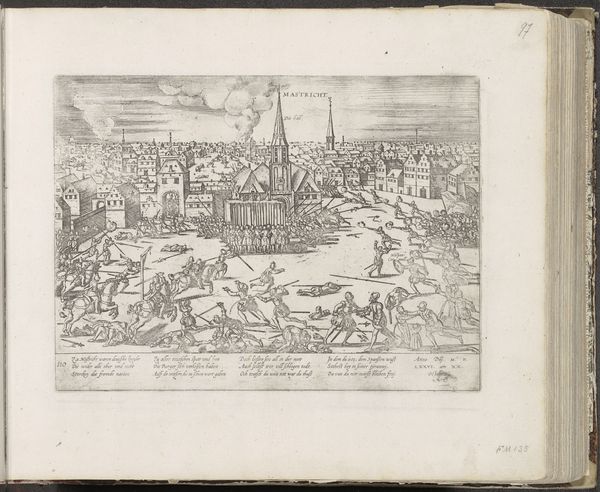
Dimensions: height 325 mm, width 422 mm
Copyright: Rijks Museum: Open Domain
Editor: This is "Keizer Jozef II leidt het leger bij Zemun, 1788," or "Emperor Joseph II leads the army at Zemun, 1788," made between 1788 and 1790, artist unknown, and it's an engraving. The detail is incredible, but the composition feels a bit flat. What stands out to you in this print? Curator: It's fascinating to consider this engraving as a product of its time. We're seeing not just an image, but also the output of a specific workshop, a method of reproduction tied to the dissemination of power. Look at the repetitive marks that create the illusion of a vast army – a mechanical process rendering bodies en masse. Consider how that visual language, created through the labor of the engraver, reinforces the spectacle of military might. Editor: So you're focusing on the engraving process itself and its connection to… power? Curator: Precisely! How does the *reproducibility* of this image relate to the goals of the Habsburg Empire at the time? It’s not just about showing Joseph II leading troops. It’s about constructing a visual narrative of imperial authority through mass production and consumption of images. This isn’t painting or sculpture made for a select audience, but print intended for broader circulation. Editor: I never really considered the act of making and distributing the print as part of the message. I guess I was just looking at it as a historical document. Curator: And that's understandable! But thinking about the materiality – the paper, the ink, the engraving tools – and the socio-economic context of its production adds another layer to our understanding of this artwork. Where and how was this print likely consumed, and who had access to it? Editor: It definitely gives me a new perspective to consider the materials and context in addition to the subject. Curator: Exactly. And questioning the means of production encourages a deeper engagement with the art, pushing us beyond surface-level interpretations.
Comments
No comments
Be the first to comment and join the conversation on the ultimate creative platform.
